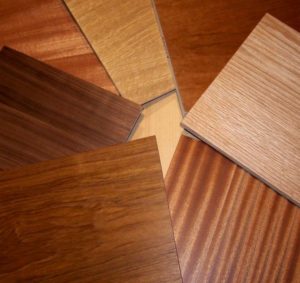 Did you know that J. Gibson McIlvain sells plywood? It came to my attention recently when visiting customers that this was not a well known fact. Certainly hardwoods is where our legacy lies with hundreds of years in that market, but we decided to jump into plywood several years ago to offer some alternatives to our customers.
Did you know that J. Gibson McIlvain sells plywood? It came to my attention recently when visiting customers that this was not a well known fact. Certainly hardwoods is where our legacy lies with hundreds of years in that market, but we decided to jump into plywood several years ago to offer some alternatives to our customers.
Despite plywood’s popularity, users tend to know very little about some of the features that distinguish a top quality sheet from the rest. I know personally that I have had some bad experiences with this supposed “stable” material when a cheaper made sheet cups like a potato chip at every opportunity. Since one of the primary reasons to use plywood is stability, these lower quality sheets seem quite ironic.
The plywood inner core is everything when it comes to the performance and appearance of the entire sheet. As face veneers have gotten thinner, they offer less support, and the core is even more important. It is this feature I will talk about today, as distinguishing between the types of hardwood plywood out there means choosing the right plywood core to match your project is the most important thing you can do for a successful outcome.
Veneer Core Plywood
This is the most common core for plywood. In this core, thin veneers varying from 2 mm up to 6.5 mm are laid in alternating grain patterns to create a stable substrate. Usually the more layers, the more stable the product as the individual veneers are smaller. Gaps amongst and between veneer layers are inevitable and the quantity and size dictates the grade of the sheet. Veneer core plywood is known to have the best screw holding capacity, and the veneer species themselves are readily available; thus this core is what most people know. The species of veneer can play a role in the performance as well. Usually the species is determined by the location of the mill where it was manufactured, but some of the differences may make you seek out specific options.
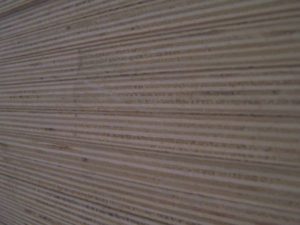
- Fir Core– usually found in plywood manufactured in the West coast, Fir is very resilient to weather while being quite stable. It has outstanding screw holding ability and the relative softness of the layers means that during manufacture any inconsistencies will even out during compression.
- Poplar Core– usually found in Eastern manufactories, Poplar is a bit heavier than Fir and harder. The more robust nature means Poplar core is very stable, but its lack of weather resistance means it isn’t the best solution for exterior applications. Poplar will not compress, and as such voids and knots in the core plys will telegraph to the surface veneer. Poplar must be dried properly first as over dried or under dried cores are prone to delamination.
- Aspen Core– found in West and Northern factories, Aspen is similar to Fir in many ways but less dense resulting in a lighter sheet. It is soft like Fir and will compress nicely giving a good consistent face.
- Birch and Maple– these cores are a specialty high end product and will often have many more thin plys than the Poplar or Fir cores. Both species are much harder, and the thinner, more abundant layers make an extremely stable product. There are no voids with this type of core. The edge strength is very high and less prone to splintering like Fir and Poplar while also being very attractive. This plywood is often used when the edges will be exposed in the final product and decorative in nature. Maple ply is also often known as Apple Ply. These high density cores are the creme de la creme of veneer cores as well as the most expensive.
Lumber Core Plywood
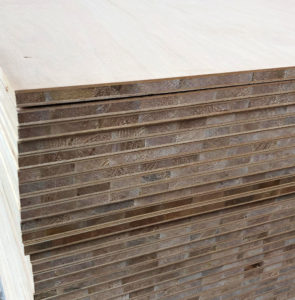
This plywood consists of thicker strips of hardwood, usually Basswood, glued up into a larger panel then face veneered. Two face veneers are used, one cross grain to tie together the core and prevent any telegraphing of the individual boards in the core to the face. Unlike the thin veneers, the individual staves or battens in this core are much thicker, usually 2/3 the total panel thickness. The advantage and primary reason to use a lumber core plywood is stiffness over longer lengths. Bookcases and shelves are the perfect example for using a lumber core plywood. In furniture an added advantage is when routed edge treatments are necessary and the edges cannot be concealed.
Additionally since lumber core plywood (also known as Blockboard in much of Europe) uses primarily softwood lumber for the core, it is substantially lighter than veneer core plywood or MDF. As such Blockboard is used a great deal in the marine and aerospace industries where weight is a chief concern. In some instances a hardwood can be used in the core, but usually a lower density species is chosen to keep the weight down while adding strength with a tougher hardwood.
An issue with lumber core plywood is the variability that can be found in the core itself. Often voids can be found between the boards both on the long edge and at the end grain between lengths. Variance in price is usually indicative of how well the core is constructed. Factors to consider are width of the individual staves, density of the species used, dryness of the lumber, and whether or not the staves are joined together solely with glue or some time of interlocking finger joint. In the cases where finger jointing is used, voids all but disappear and a very rigid and stable core is the result. This is the most expensive core to make and finding suppliers for this type is increasingly difficult. Only the highest grade in lumber core should be considered as lesser grades have a severe drop off in consistency and substantial voids will be found. It is uncertain how much longer this type of core will be available with a drastic wane in availability.
MDF and Particle Board Core
While I group these two together since they are a composite substance, it should be known they are quite different as a finished product. Both cores are comprised of particles of wood glued together to make a consistently flat and dimensionally uniform substrate onto which the face veneer is applied. They are extremely stable but much heavier than solid wood core versions. Particle board uses larger pieces and will be lighter than MDF, but edges will splinter easily and they are not as strong as MDF. MDF is made of essentially dust and makes a much heavier but highly stable and millable substrate with strong edges. Both cores have been accused of having poor screw holding ability, but recent advances in fastener design has changed that. When used with specific particle board or MDF screws with wider threads, these plywood cores have outstanding screw holding ability.
There are other options on the market, but those listed above are the most common. Based on feedback from our customers, we have opted to stick with MDF and Veneer core plywood. We can obtain most any species of veneer core, but our most popular are Fir and Birch. Ultimately, when choosing the right plywood for your job, there are many factors to consider, but they usually all come back to the composition and construction of the core. Ask questions of your supplier to understand where and how the plywood is manufactured, so you can decide what will work best. Plywood can be a bit daunting since so many options and techniques are out there, and the manufacturers seem to purposely remain obtuse in explaining their methods and materials. If you are armed with some basics about core behavior, you are well on your way to picking the right product for your job.
Types of hardwood plywood
Confused yet? You are not alone. So much plywood and so many factors to consider. In the end you need to understand what is important for your project in order to choose a quality plywood panel. To some it is stability, to others it is the quality of the face veneer. As always, we are happy to answer any questions about plywood, and our staff is well educated in the intricacies of this product so as to be able to provide advice whenever possible. Next time we will talk about the world of Marine Grade Plywood, because this product changes the rule substantially.
Learn more about the lumber industry:

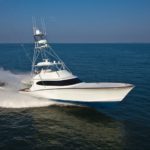
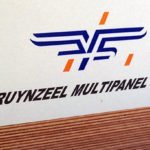
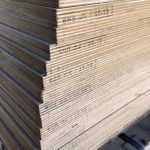
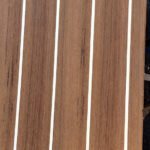
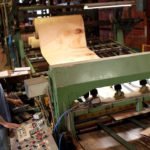
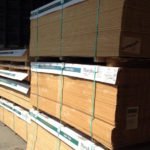


That’s a very informative article about hardwood plywood core comparisons. Thanks for sharing!
Thanks for the comment, I plan to discuss plywood a lot more in the future. There are some myths and misconceptions that need clearing up.
Good information but there is more. You did not mention veneer core with MDF crossbands. This is my favorite core as it combines the best features of veneer core and MDF… good screw holding, moderate weight, a flat surface for the face veneer, reduced chipout and others.
What are your comments?
Keith, you bring up a great point and I barely scratched the surface of what is available in plywood cores. Combi-ply is what most manufacturers are calling this MDF and HDF crossbanding. I agree completely, it is an outstanding product that combines the best of all worlds. The issue is that it is a very labor intensive and exacting process to manufacture that involves a lot of alignment and calibration to get dimensionally correct and stable panels. This extra time adds cost. Usually we find that combi-ply would only be used with a very high end veneer face anyway so the product is already very expensive. When you add more on top of it, customers begin to balk a bit. For example an A1 panel of Cherry would run somewhere around $80 but adding the combi core will make the panel now around $95. While this may not be a big deal for 2-5 sheets, when you are doing an entire room or kitchen it can add up quickly.
Where we find the best use of combi-ply is in the architectural millwork industry. The quality of their panels needs to be next to none and often they use multi-ply birch cores which is truly the best stuff around. Lately these cores have come into vogue where the edges are meant to be exposed. When this is not the case however, the combi core is actually a cost saving measure while just a stable, and flat. In other words I see combi-ply to be the compromise between an all birch core and the all veneer core.
Thanks for bringing this up, great point. By the way, we can get these combi core products too, it really just depends on the customer’s budget.